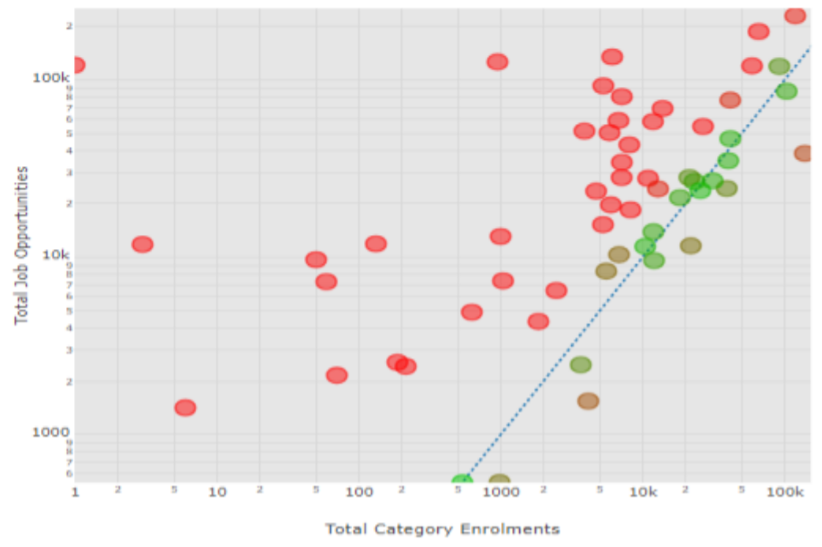Vocational Education and Training (VET)
Vocational Education and Training (VET) partners with industry and government to provide people with workplace skills and technical knowledge to help them advance their career.
Currently, 77% of VET graduates in NSW are employed after training.
The Question 
The labour market is constantly evolving, and skills requirements vary significantly across regions due to factors such as geography, growth rate and socio-economic status.
The DAC was engaged to identify where Vocational Education and Training (VET) could be better tailored to meet the needs of both employers and jobseekers.
Our Solution 

- The DAC used natural language processing to scrape job advertisement data from websites
- Aligned demand for skills with VET courses and distribution of government funding
- The tool provided stakeholders with a unique view of the job market and distribution of skills amongst past and prospected VET graduates
- Exposed discrepancies between education requirements of employers and popularity of VET courses, particularly in rural areas
Impact
This provides an opportunity to optimise the education system to cope with the job and labour markets through data-driven transparency between jobseekers and employers. We are able to inform future students on emerging industries, and cut back enrolment in courses where the job market is oversaturated.
The project has successfully united a number of government and nongovernment organisations using a cost-effective solution.
We were very much looking forward to the DAC helping us work out how to accurately match demand/supply to actuality. To help us work out if various courses are available… that will lead to jobs after study
Michael Lau, NSW Department of Industry
What Next? 
The model is entering final stages to be refined into a fully usable product.
Evaluation will need to be undertaken in industry sectors where this tool will provide optimal results. Currently commercial job websites are highly used.